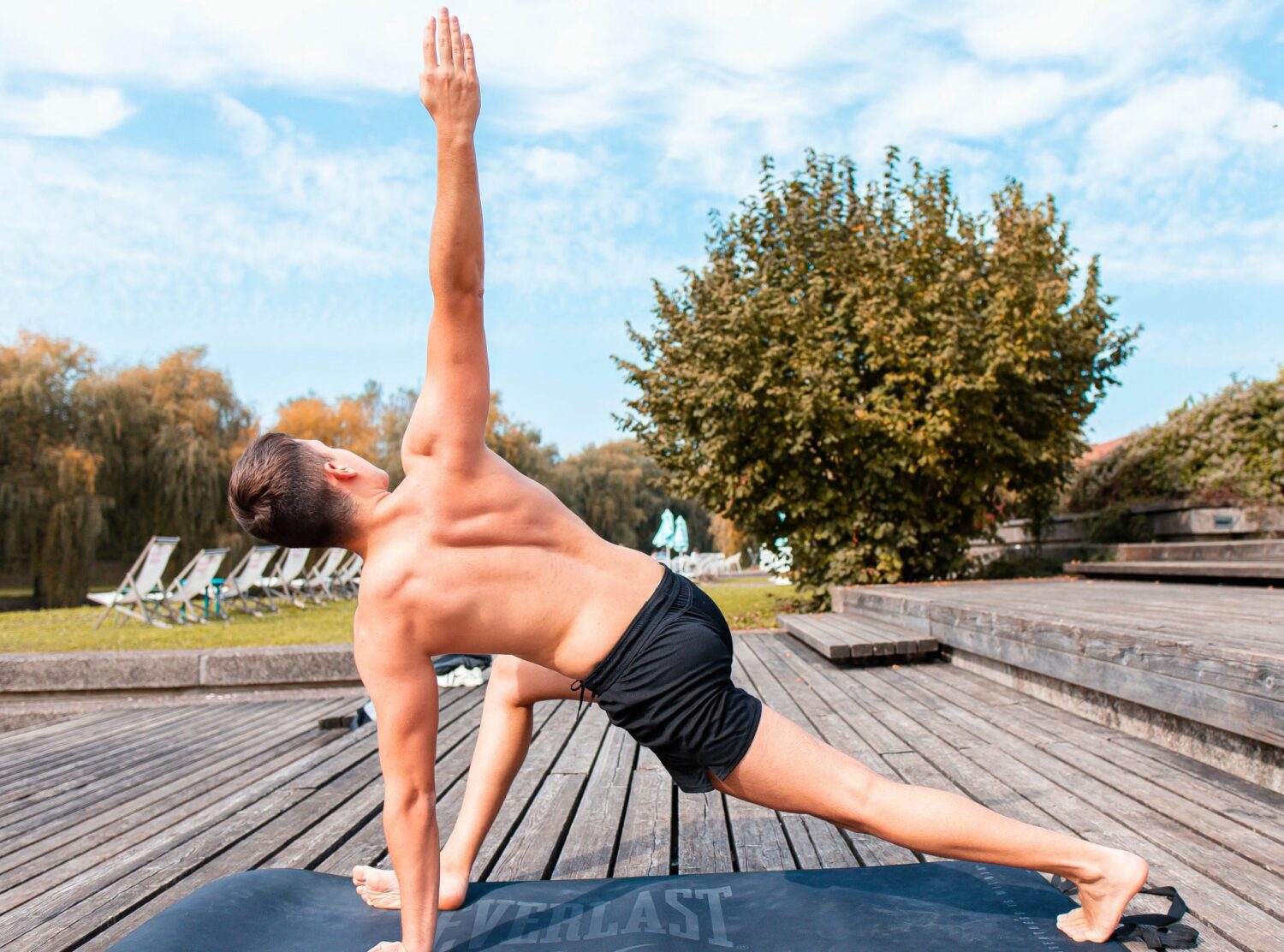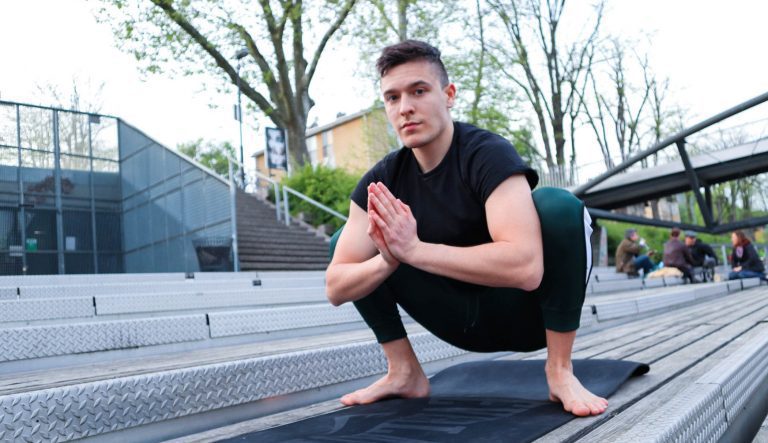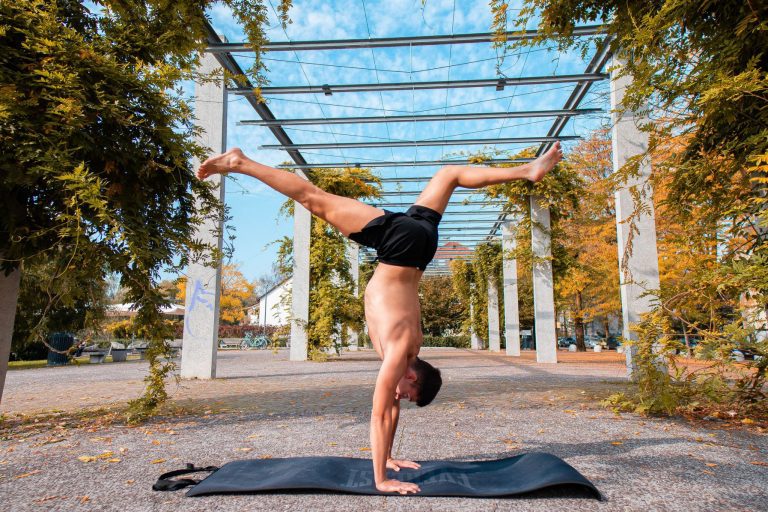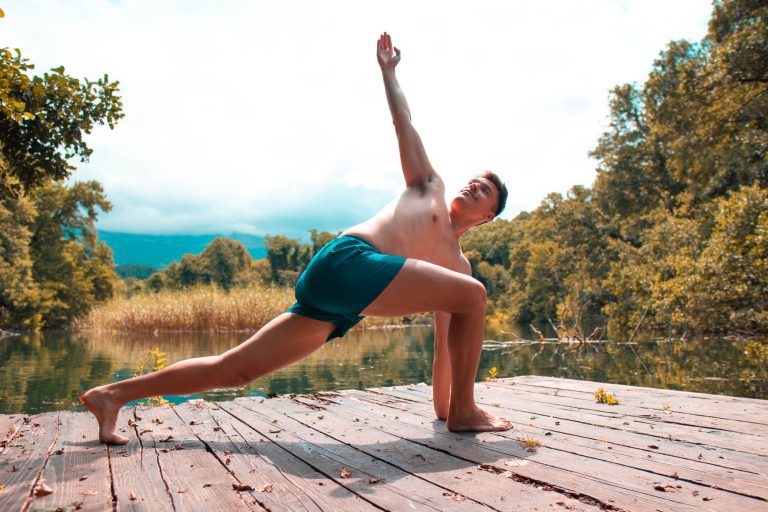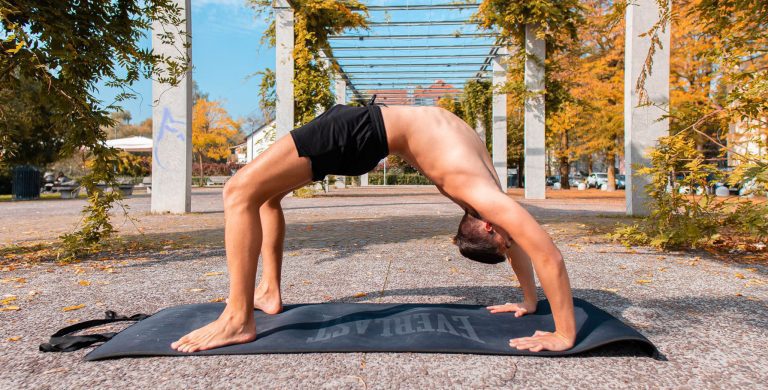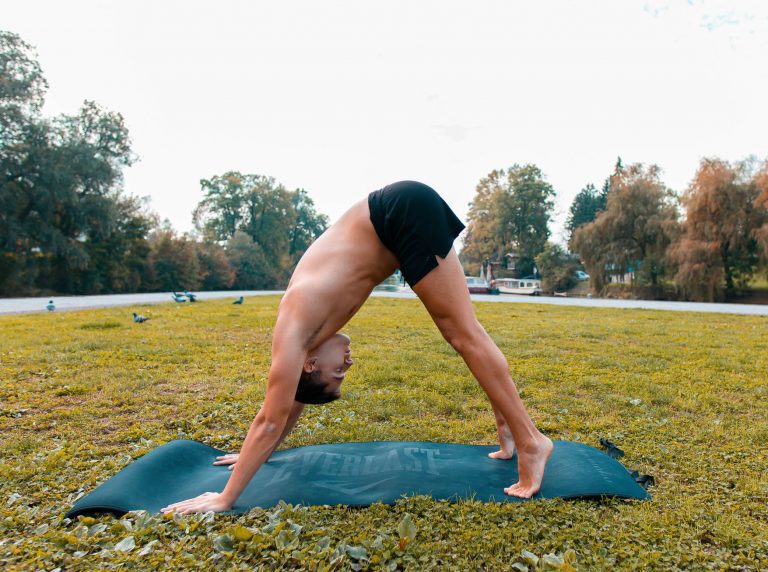Hatha Yoga 101 | Poses, Sequence, Asana, & Principles
Hatha Yoga is a traditional yoga style that includes the practice of asanas and pranayama, preparing our body for a longer meditation. Although hatha yoga isn’t too structured and restrictive on its own, there are quite a few hatha yoga poses and hatha yoga principles characteristic of this style.
Hatha Yoga 101
Long-time meditation requires a lot of muscle strength and endurance, breath control, and the ability to resist temptation. Hatha means “effort” or “force” for which practitioners need exertion to start. That makes this practice unique, it is the ultimate guide to starting exertion, easing up, and gradually progressing into breathwork leading to meditation.
To learn more about different yoga types, feel free to check out:
- Iyengar Yoga – Poses, Benefits And Props
- Ashtanga Vinyasa Yoga | 8 Limbs of Yoga
- Vinyasa Yoga Flow | Versatile & Dynamic Yoga Style + Benefits
As a physical branch of yoga, Hatha represents a system of physical exercise most common in the Western world. It is a combination of different yoga styles, with three core principles like asanas, pranayama, and meditation in which we tend to hold poses for a longer duration. It is meant to harmonize or balance our body and mind to facilitate deeper meditation.
Forceful effort
The real meaning of Hatha is not “ha” which means sun and “tha” which means moon. There was a misconception that the name is derived from the integration of solar and lunar energies, which are also a part of hatha yoga. The real meaning of Hatha is “force” or “effort”. Just as the practice is structured by itself, referring to the need for initial effort exertion to attempt the practice. This practice requires starting willpower to start, and consistency to gradually progress.
History
Hatha comes as a part of Natha, which is combined Buddhism, Shaivism, and Indian yogic traditions. Hatha dates back to the 11th century CE, the oldest text which comes from tantric Buddhist, Amerasiddhi. Matseyndranath is the founder of Hatha yoga, known as a saint in Buddhism and Hinduism. According to Dattatreya who is a lord of Hinduism yoga, considered a deity in many regions like India and Nepal, there are two types of hatha yoga. One is practiced by Yajnavalkya, known as the Ashtanga yoga or the eight limbs of yoga. The other one is practiced by Kapila, practice which incorporates eight mudras.
Transition
Dating back to the 11th century, it is among the oldest yoga styles in the world. Old writings and texts have been written that describe the way Hatha Yoga is practiced, Amritasiddhi being the most popular. The real movement of this style of yoga has been transitioned to newer generations, gaining more popularity in the 15th century.
In this modern world, the 20th century is a time when this yoga style came to bloom in the Western world. Vivekananda Swami 1983 brought it to America. It is known that The Beatles had a spiritual advisor, by the name of Maharishi Mantesh Yogi, who is known for developing a transcendental meditation technique.
In the Western world, this Hatha yoga style is a little bit more on the physical side, gaining its popularity and being changed or “influenced” by European gymnasts who included a couple of inversions and core strengthening exercises inside the practice.
In the west, this style is taught by krishnamacharya, yoga an exercise combining Hatha asanas and gymnastic exercises developing a flowing style of physical yoga.
Supernatural
Hatha yoga developed a model which focuses on supernatural or superhuman characteristics. Those paranormal powers or abilities could have been a product of spiritual growth, and practice of higher state attainment.
Superhuman abilities were referred to as siddhis. The main goals of Hatha Yoga are focused on the idea of anti-aging or slowing down our aging process, magical powers, and moksha which means liberation.
Traditions like Kaula were focused on alchemy, magic, kalacancana, or cheating death, and parakayapravsa or entering another’s body. In historic texts, Indian philosophy on hatha yoga does not give huge importance to the siddhis, mainly because they can become a reason why someone involves in these practices which can be a distraction to enlightening, awakening, or spiritual liberation.
However, the majority of historic hatha yoga text does not give any importance to siddhis because they are a distraction to spiritual liberation, self-knowledge, or release from rebirth.
Training structure
Hatha yoga requires physical effort to start with, then slowly eases into breathwork ending with meditation. There are no specific rules or guidelines for training. Often, it lasts around 45-90 minutes, which is pretty long. A certified teacher offers guidance through the sequences and asanas, reminding his students to breathe in a certain manner.
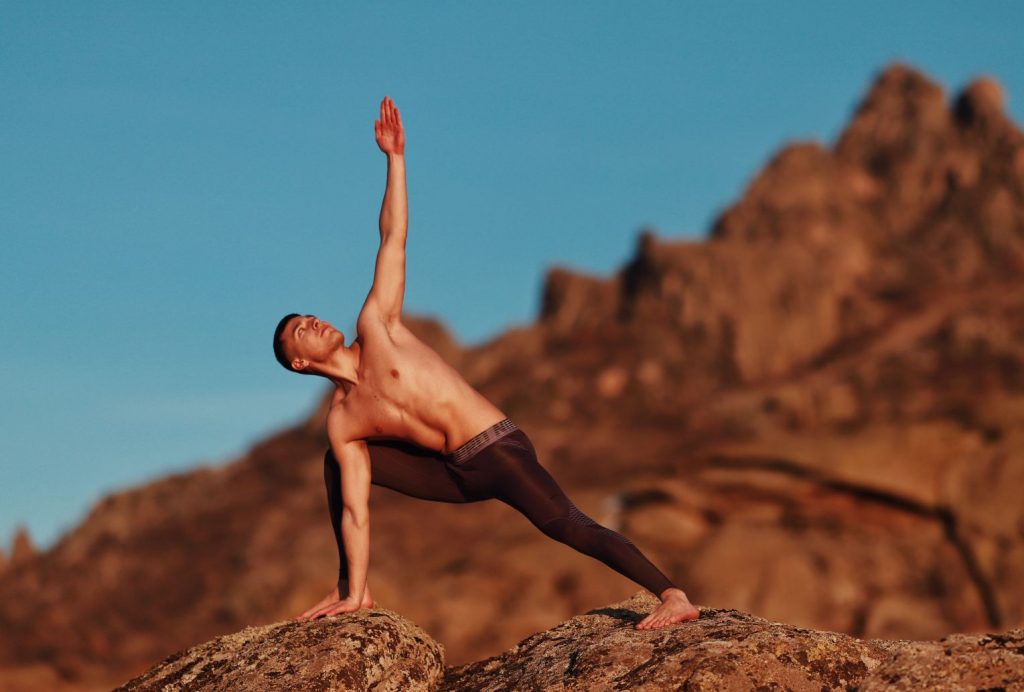
Energy flow
Even though Hatha is not rich with fast transitions and a short time spent in asanas, practitioners feel the heat we call prana energy in the body. This heat, therefore, affects the flow of energy on a physiological level improving circulation and bringing fresh blood and nutrients to our internal organs and connective tissue. It can improve energy flow through the channels known as “ida” and “pingala”, represented as the opposite, like masculine and feminine, hot and cold, black and white. Ida is associated with the moon or lunar energy means comfort in Sanskrit. Pingala has bright light energy, like masculinity, represented by the sun.
Kundalini energy
Saiva practices are known to be adopted by Hatha Yoga. Saiva practices come from Shaivism, which is a Hinduistic tradition that reveals Shiva as the supreme being. Kundalini, also known as shakti is part of Hatha Yoga. It is intense energy located at the base of our spine. Through Hatha practice, it is said that one can awaken this energy upwards, through the spine. Transforming sexual to spiritual energy is crucial to access higher states of consciousness. With pranayama and asanas, we can improve energy flow, release blocked energy in chakras and awaken this powerful force. James Mallinson’s book Roots of yoga is influential on this topic. According to him, this style of yoga can affect and preserve semen or vital energy.
No requirements
The number one reason for its popularity and frequency of training is how this yoga has a more of a physical element to it. Of course, Hatha as an old Indian discipline is not the same as it is practiced in the modern world today. But just for the fact that this style does not require practitioners to adopt a set of beliefs, hold certain ideology, or radically change their perspective, it is easier to spread in the world. Both sexes can practice, no matter their size, body shape, or experience with yoga.
Combination of different styles
Westerners mostly prefer and practice this style, which is slightly different from Vinyasa. Hatha is a system or set of physical exercises from Ashtanga Yoga, Vinyasa Yoga, Iyengar Yoga, and Power Yoga. The main goal is to extend the time our body can spend in meditation. Different balancing poses are included in this practice, suitable for beginners and more advanced practitioners. Lots of those poses have a great emphasis on core strength and kinesthesia.
Hatha Yoga Poses & Hatha Yoga Asanas
There are different asanas done in Hatha. Surya Namaskara, which is the basic sun salutation. There are standing asanas which include triangle pose, chair pose, and one-legged standing poses. Kneeling asana which includes cat-cow, spine twist, and camel pose. Sitting asanas with side torso stretch, lotus pose, and sitting forward bend. There are asanas in prone and supine positions like planks, and cobra with twisting and core balancing exercises with flexion and extension of the knees. Also, there are inversions done like headstands, wheel pose, and shoulder stands.
Three core hatha yoga principles
Mitahara
Mitahara, is the habit of healthy eating, described as moderate eating in Indian philosophy. One must learn to not answer to all his temptations. This way of eating doesn’t demand yogis to eat a specific food, it allows one to eat what is tasty for them, but to transition to more organic food. Mitahara also integrates mindful eating or what we call awareness of food and drink. “Mita| means moderate and “Ahara” means eating food. This diet must be individualized, or tailored to fit one’s needs depending on other external factors. It teaches us to eat in moderation, to never eat too much or too little, to leave one-quarter of our tummy unfilled after meals, and drink clean water.
Pranayama
Pranayama is the breath control practice. One of the core principles of Hatha Yoga is to control our breath while we are doing the postures. There are different techniques that include different variations or ratios of puraka – to inhale and rechaka to exhale. In Hatha, we also have breath retention, known as kumbhaka, after exhaling and after inhaling. More advanced breathing techniques can be used by experienced practitioners.
Asanas
Asanas are posture exercises in yoga. Proper posture or form is crucial in Hatha yoga. There are different sequences and poses, mostly focusing on stretching the muscles and developing strength, while improving one’s endurance to sit in meditation, providing cleanse or detox to the body. Postures are held for a longer duration of time and are more suitable for beginners than in other styles of yoga.
bonus tip
Meditation can happen in different positions, not just seated lotus. Hatha philosophy puts emphasis on meditation that can be done while holding the poses, once effort disappears and we feel completely comfortable.

